
The Integumentary System (Structure and Function) (Nursing) Part 1
Stratum basale, also known as stratum germinativum, is the deepest layer, separated from the dermis by the basement membrane (basal lamina) and attached to the basement membrane by hemidesmosomes. The cells found in this layer are cuboidal to columnar mitotically active stem cells that are constantly producing keratinocytes.

Diagram of human skin layers Charlotte Desire
What are the different layers of the skin? There are seven layers to the human skin. In order from superficial to deep (external to internal) they are 1. Stratum corneum 2. Stratum lucidum 3..
Skin diagram to label Labelled diagram
Diagram of human skin structure. Image. Add to collection. Rights: The University of Waikato Te Whare Wānanga o Waikato Published 1 February 2011 Size: 100 KB Referencing Hub media. The epidermis is a tough coating formed from overlapping layers of dead skin cells.

Structure and composition of the skin [5]. Download Scientific Diagram
Figure 5.2 Layers of Skin The skin is composed of two main layers: the epidermis, made of closely packed epithelial cells, and the dermis, made of dense, irregular connective tissue that houses blood vessels, hair follicles, sweat glands, and other structures.
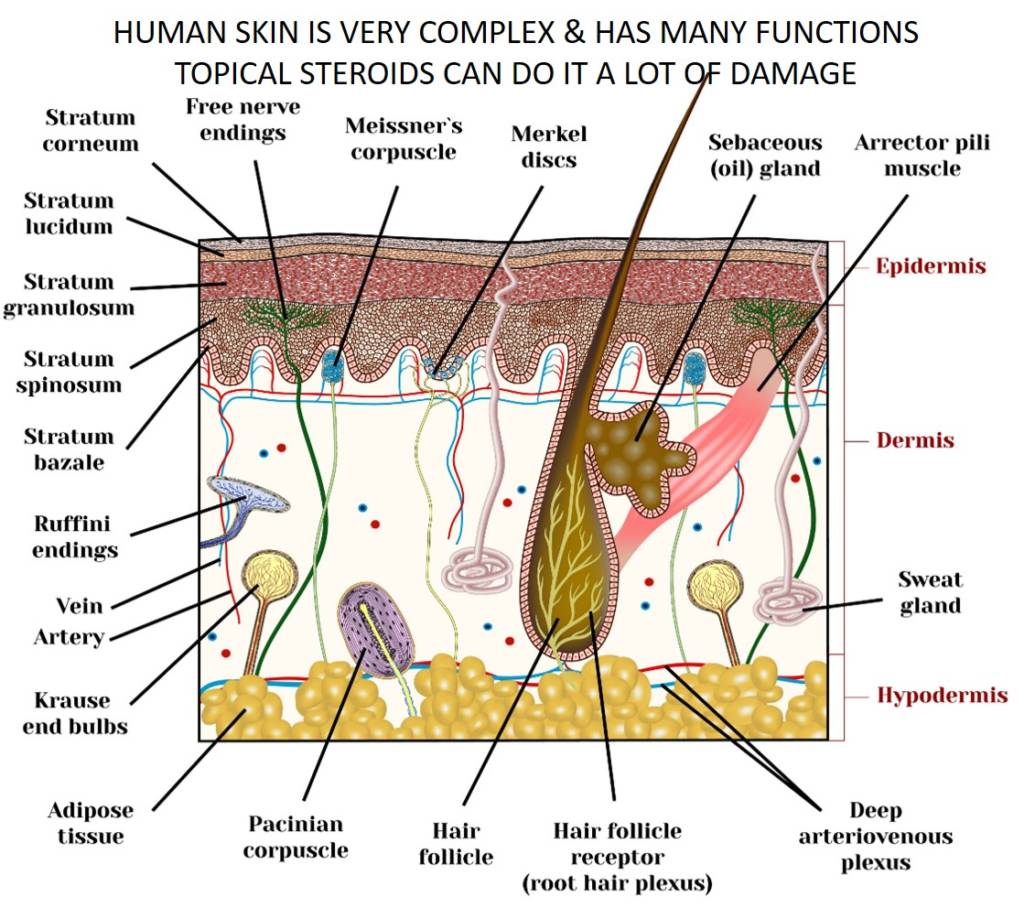
Skin topical steroid withdrawal with wheatgrass extract A
Key facts about the integumentary system; Skin: Functions: chemical and mechanical barrier, biosynthesis, control of body temperature, sensory Layers: Epidermis (Stratum Basale, Spinosum, Granulosum, Lucidum, Corneum) and dermis (papillary, reticular) Mnemonic: British and Spanish Grannies Love Cornflakes Hair: Types: vellus and terminal Structure: Follicle and bulb (shaft, inner root sheath.

Skin Structure Diagram Best Picture Collection
Spend some time analyzing the skin diagram labeled above. Try to memorize the appearance and location of each structure. Learning the function of each structure will accelerate your ability to memorize, so be sure to check out our detailed article on The Integumentary System parts and functions..
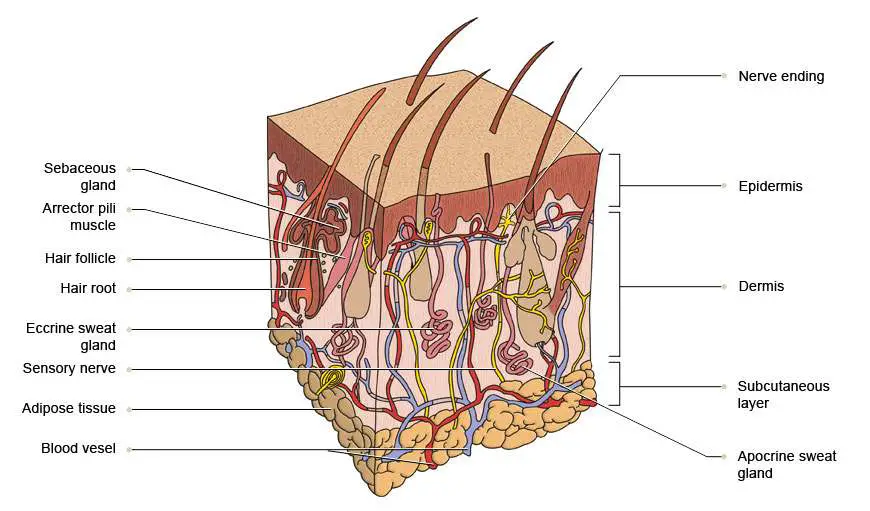
Skin diagram labeled
Epidermis The epidermis is the top layer of your skin. It's the only layer that is visible to the eyes. The epidermis is thicker than you might expect and has five sublayers. Your epidermis is.

Skin anatomy. Human normal skin Background Graphics Creative Market
The skin consists of three layers of tissue: the epidermis, an outermost layer that contains the primary protective structure, the stratum corneum; the dermis, a fibrous layer that supports and strengthens the epidermis; and the subcutis, a subcutaneous layer of fat beneath the dermis that supplies nutrients to the other two layers and that cush.
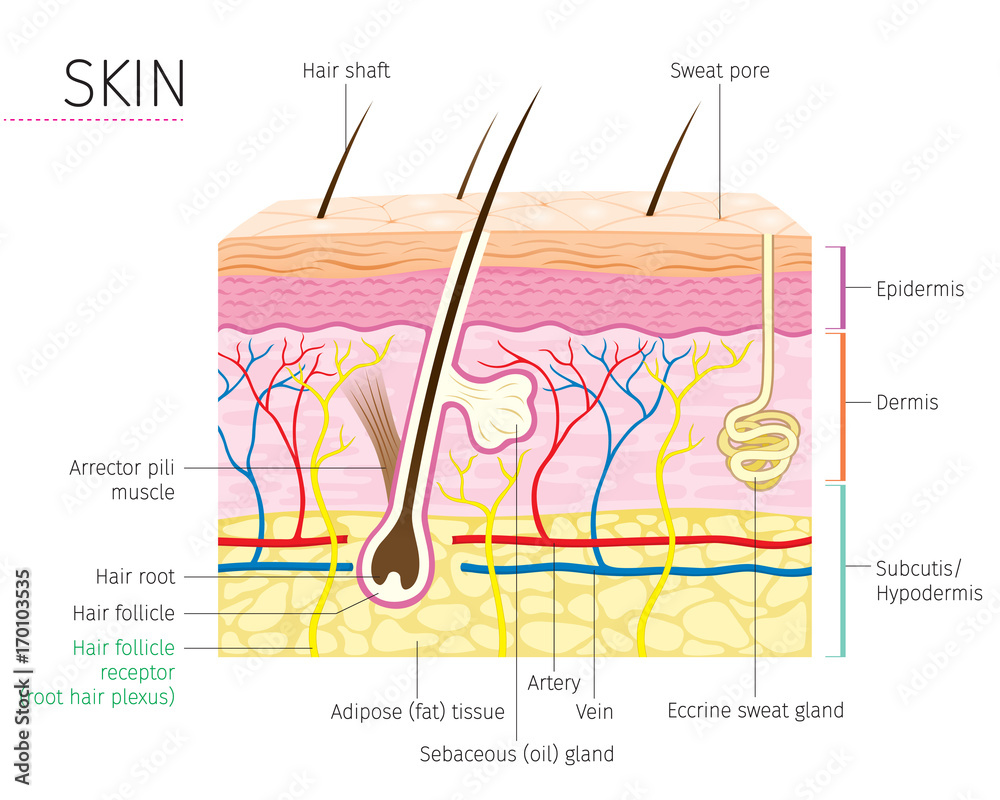
Skin Diagram Labeled
Start Quiz Explore Skin Diagram with BYJU'S. Diagram of the skin is illustrated in detail with neat and clear labelling. Also available for free download
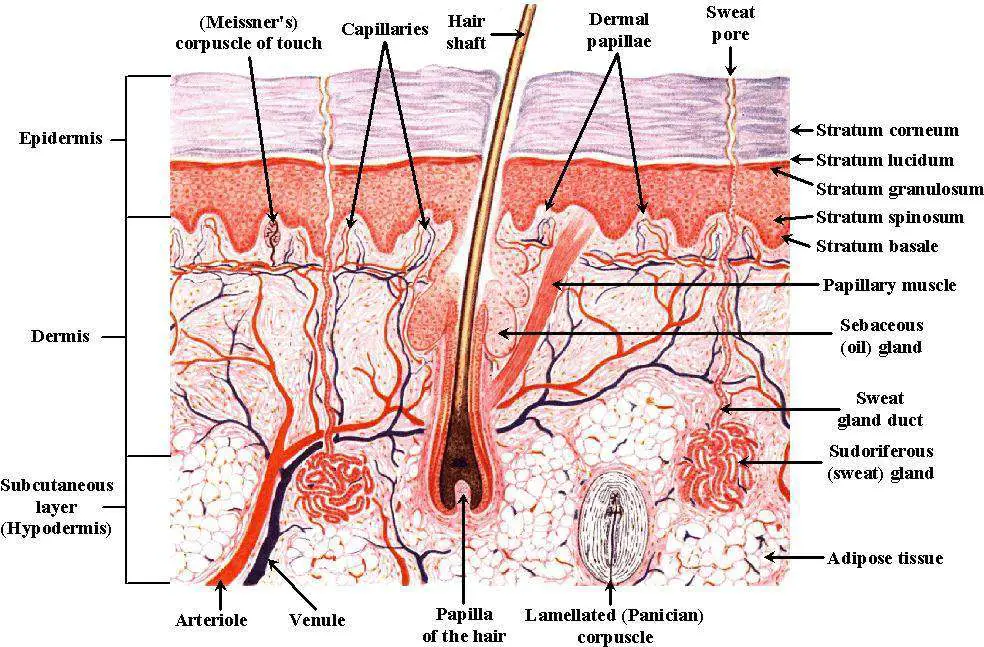
Skin diagram labeled
Skin Cutis 1/3 Synonyms: none This article will describe the anatomy and histology of the skin. Undoubtedly, the skin is the largest organ in the human body; literally covering you from head to toe. The organ constitutes almost 8-20% of body mass and has a surface area of approximately 1.6 to 1.8 m2, in an adult.
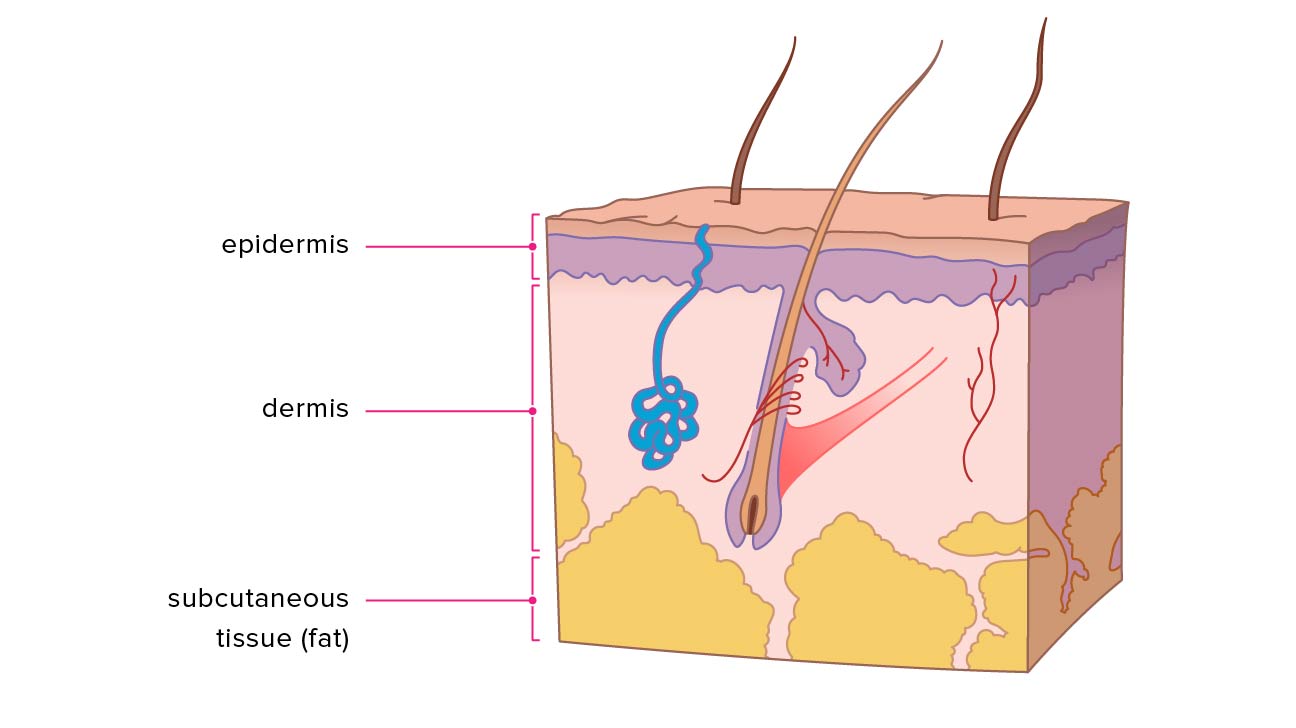
Skin clipart skin layer, Skin skin layer Transparent FREE for download
Acne Boils Dandruff Eczema Melanoma It is made up of the following five layers. Stratum Corneum The stratum corneum is the top layer of the epidermis. Its jobs are to: Helps your skin retain moisture Keep unwanted substances out of your body It is made of dead, flattened cells called keratinocytes that are shed approximately every two weeks.

Cross section anatomy of skin with labels on white background
Signs of skin infections like red streaks or yellow discharge. Unexplained skin rash or skin condition. A note from Cleveland Clinic. As the body's largest organ, your skin plays a vital role in protecting your body from germs and the elements. It keeps your body at a comfortable temperature, and nerves beneath the skin provide the sense of.
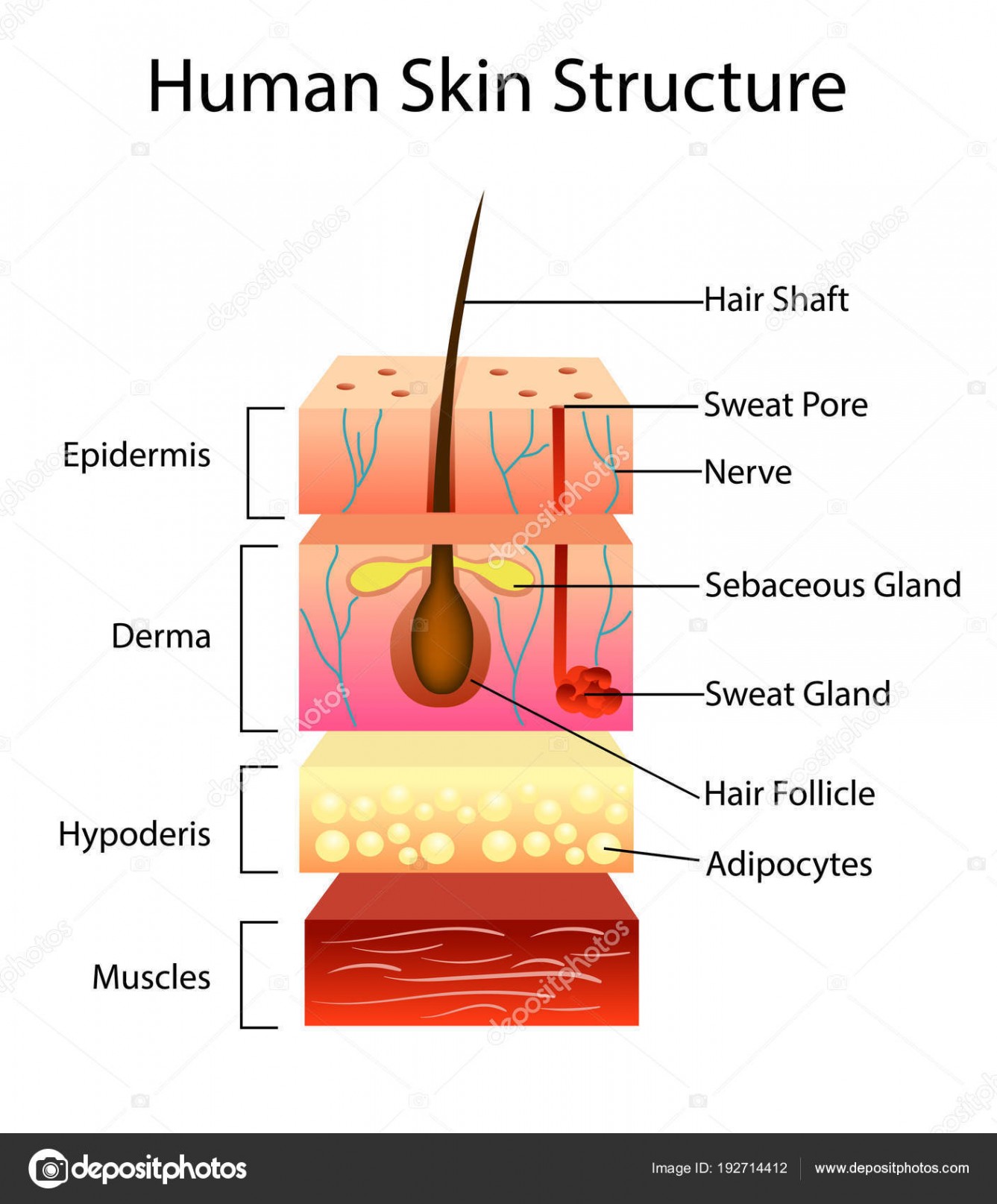
Labelled Pictures Of Human Skin / skin diagram /medical/anatomy/skin
Figure 5.1.1 - Layers of Skin: The skin is composed of two main layers: the epidermis, made of closely packed epithelial cells, and the dermis, made of dense, irregular connective tissue that houses blood vessels, hair follicles, sweat glands, and other structures.
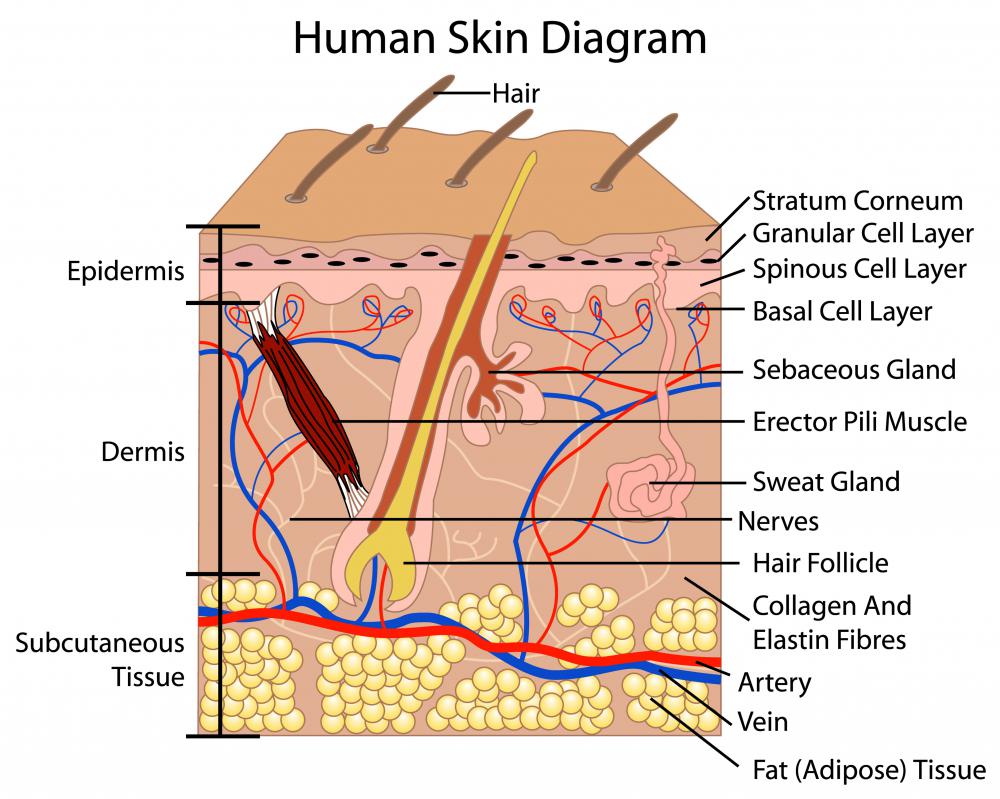
What is the Best Way to Stop Underarm Perspiration?
The skin is the body's largest organ. It covers the entire body. It serves as a protective shield against heat, light, injury, and infection. The skin also: Regulates body temperature. Stores water and fat. Is a sensory organ. Prevents water loss. Prevents entry of bacteria.

Skin Model Labeled Bing Images Skin anatomy, Physiology, Anatomy
The structure of the skin is made up of three layers of, namely: Epidermis Dermis Hypodermis Epidermis It is the outermost layer of the skin. The cells in this layer are called keratinocytes. The keratinocytes are composed of a protein called keratin. Keratin strengthens the skin and makes it waterproof.
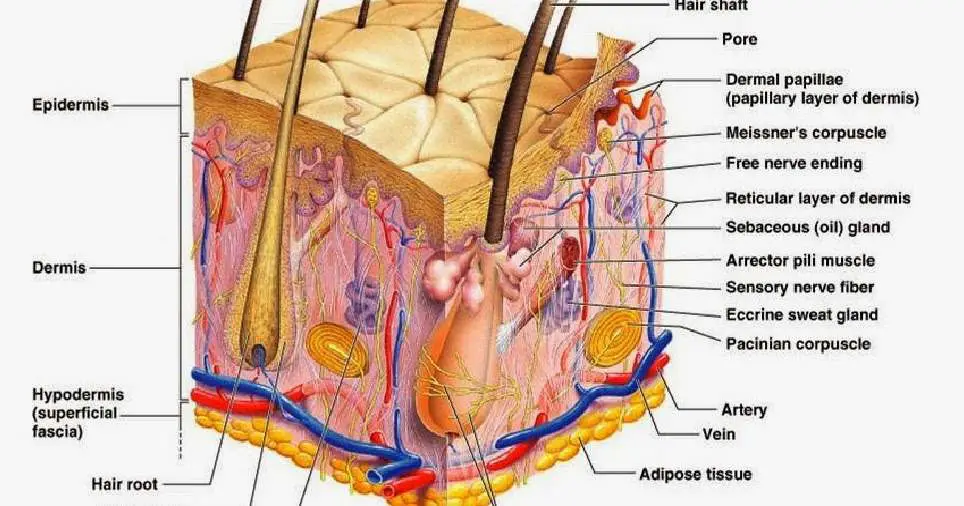
Skin diagram labeled
The skin is the body's largest and primary protective organ, covering its entire external surface and serving as a first-order physical barrier against the environment. Its functions include temperature regulation and protection against ultraviolet (UV) light, trauma, pathogens, microorganisms, and toxins. The skin also plays a role in immunologic surveillance, sensory perception, control of.